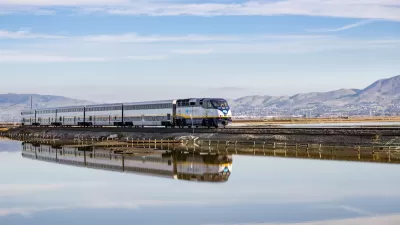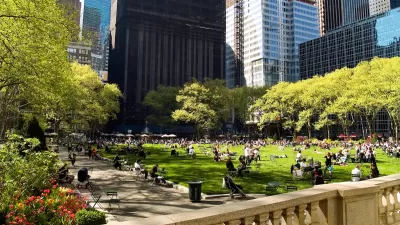Pokémon Go represents the coming of age of a powerful new technology: augmented reality. PIA Young Planner Nick Kamols applies a planner's perspective to what today's anime-based craze might tell us about what's coming tomorrow.

Pokémon Go is captivating the world and in doing so, activating places. If you are interested in how people interact with their environment, you should be interested in Pokémon Go. My relevant credentials for writing about this phenomenon are a Bachelor of Planning, keen interest in Urban Design and at the time of publishing, I have caught 806 Pokémon, visited 866 Pokéstops and walked 57.3km on my way to a level 21 Pokemon Go account. I would have progressed further by now if I had done less people-watching.
We have long speculated about how Augmented Reality(AR) and Virtual Reality (VR) may impact the future of the Built Environment. I believe AR should be embraced for its functionality of complimenting the Built Environment and VR should be treated with caution as it may compete with the Built Environment.
On the back of Pokémon, AR has suddenly entered the mainstream, a leap that VR has yet to make. I suspect we will be addressing the possibilities of these technologies at a much faster pace and on a larger scale than we recently expected.
I’m not advocating for AR to have an impact on the form of places, I do not see an apparent need; rather I think we should be using it to help achieve existing desired outcomes. Now that people are becoming accustomed to AR, it can be an effective tool for activating places and championing population density, walkability and community engagement. AR is widely accessible when on mobile devices and can be used right now for the above purposes but will become increasingly useful over the next few years.
AUGMENTED REALITY UNTIL NOW
AR has long been touted as an impending ‘game changer’ for many industries, most notably retail, but this has yet to eventuate. The most catastrophic of failed attempts of popularising AR was Google Glass, destroyed by the very glassholes who pioneered its use and left a lasting sentiment that the world is not receptive to AR.
It is important to recognise that apps featuring AR were around long before the launch of Pokémon Go. However, none were received well enough to indicate that the technology was on the cusp of taking off.
It is easy to dismiss new applications of the technology on the presumption they will inevitably fail like previous attempts to popularise AR. It is important to remember that in the story of The Boy Who Cried Wolf, the wolf eventually arrives in a big way.
BASICS OF POKEMON GO
In Pokémon Go, a mobile device is used as a tool to interact with a virtual world that is layered over the physical world. The player has to...
FULL STORY: Why Planners and Other Built Environment Professionals Should Be Paying Attention to Pokemon Go

Planetizen Federal Action Tracker
A weekly monitor of how Trump’s orders and actions are impacting planners and planning in America.

Maui's Vacation Rental Debate Turns Ugly
Verbal attacks, misinformation campaigns and fistfights plague a high-stakes debate to convert thousands of vacation rentals into long-term housing.

San Francisco Suspends Traffic Calming Amidst Record Deaths
Citing “a challenging fiscal landscape,” the city will cease the program on the heels of 42 traffic deaths, including 24 pedestrians.

Amtrak Rolls Out New Orleans to Alabama “Mardi Gras” Train
The new service will operate morning and evening departures between Mobile and New Orleans.

The Subversive Car-Free Guide to Trump's Great American Road Trip
Car-free ways to access Chicagoland’s best tourist attractions.

San Antonio and Austin are Fusing Into one Massive Megaregion
The region spanning the two central Texas cities is growing fast, posing challenges for local infrastructure and water supplies.
Urban Design for Planners 1: Software Tools
This six-course series explores essential urban design concepts using open source software and equips planners with the tools they need to participate fully in the urban design process.
Planning for Universal Design
Learn the tools for implementing Universal Design in planning regulations.
Heyer Gruel & Associates PA
JM Goldson LLC
Custer County Colorado
City of Camden Redevelopment Agency
City of Astoria
Transportation Research & Education Center (TREC) at Portland State University
Jefferson Parish Government
Camden Redevelopment Agency
City of Claremont





























